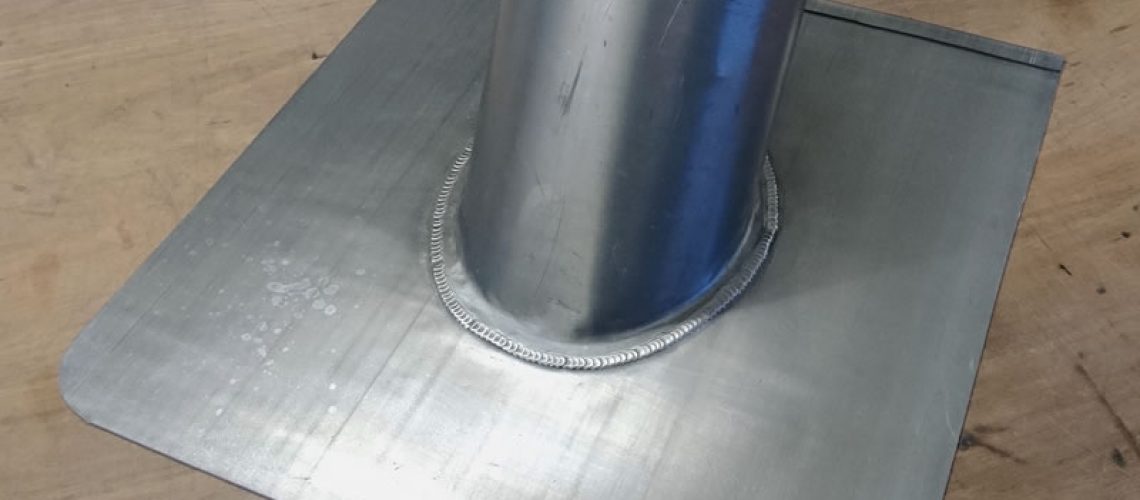


Lead sheet is the earliest known metal to be used as a roofing material. From early medieval times many churches and fine houses used sheet lead for their roofing material, the lead sheet, which had been cast on a bed of sand, continued to be used exclusively until the 18th century, when milled lead (now known as rolled lead) began to be used as the choice material for this type of roofing.
With a proven lifespan in excess of 100 years, lead continues to be used today on many historic and period buildings and still has many applications within modern roof designs and constructions.
There are three types of lead used today within building refurbishment and construction, with differences in the way the product performs and with that its selected application.
Rolled or milled lead sheet (as it was otherwise known is the most commonly used and widely produced. As its name suggests, it is made on a rolling mill that controls the thickness of the finished sheet to within fine tolerances. Rolled lead’s uniform metallurgical grain structure helps it to resist fatigue cracking from thermal movement.
Sand cast sheet, still made using the oldest method of manufacture, remaining in demand for restoration and refurbishment work where like-for-like replacement is required. Although normally produced in the thicker codes of the sheet, it has proved to perform just as well as rolled lead sheet.
Machine cast sheet is the latest manufacturing form, originally introduced to the UK as a sound attenuation product and adapted for roofing in the 1980s. Machine cast sheet does not have a uniformly distributed grain structure and manufacturers working and fixing instructions should be adhered to.
Uses of Lead in Construction
Lead linings are commonly found in the valleys between pitched roofs and behind masonry parapets. Defects here often seep quietly for months or even years, providing the ideal conditions for dry rot, wet rot, insect infestations and other forms of decay. The correct use of lead is crucial to their success, and if correctly detailed, these linings can last for centuries.
Properties of Lead
The durability of lead, along with sheets which are easily shaped by basic hand tools are reasons why lead sheet makes such an excellent roof covering. Lead sheet is also an unrivalled weatherproofing material which can be crafted and shaped to fit, protect and preserve any detail of architectural significance, no matter how complex.
Thermal movement is a natural occurrence in lead sheet, caused by the variation in day and night temperatures. Extreme variations occur in spring and autumn when high day temperatures can be followed by very low night temperatures.
Defects in Lead
Being a soft malleable material, lead can create problems for the unwary. Lead sheet reacts to thermal changes, and It is necessary to properly allow for this thermal movement when sizing and fixing, and why only a skilled installer should be used.
Lead sheet has an excellent performance record, but when failures do occur, it is normally the result of incorrect sizing and fixing, restricting natural thermal movement.
Lead sheet fixed at both ends, will inhibit the natural expansion and contraction and result in the sheet buckling at the same point, the sheet will lose its elasticity and fault lines and cracks will follow, allowing the ingress of water.
It is also important for the architect to be aware of other design issues affecting the performance of the sheet; including the type of substructure on which the sheet is laid, the positioning of the drips (steps) which can result in trapped bays, and the sizing of joints (drips and laps).
Lead Gutters and Linings
When considering gutters, be it parapet or tapering valley gutters on historic buildings, it is usual to specify Code 7 or Code 8. it is essential that the contractor engaged to carry out the leadwork has sufficient knowledge and experience to recognise the problems that can arise with the often, very long runs that come with these applications
Gutter Failures – Can be the result of over-sizing (in width and/or length)
Over-fixing Gutter bays – Should be fixed at the head, to avoid fatigue
Heavy stone slates – Additional care and alteration to detail may be required.
Trapped bay – A gutter bay fixed into the rebate at one end turning the corner at the bottom.
Run-off from lichen and moss – Roof or gutter bay detail to have a sacrificial flashing installed.
Gutter Outlets and Rainwater Hopper Heads
The sizing and positioning of the outlet or rainwater head is another area needing careful consideration. Historic buildings with parapets require consideration, particularly where pipework runs internal of the masonry structure and could allow for leakage into the building.
In summary, the use of lead sheet is as important today, as it was in bygone days, however, its use and importance on period and historic buildings have to be considered in context to the outcome required, and in particular the lead craft skills available to the contractor.